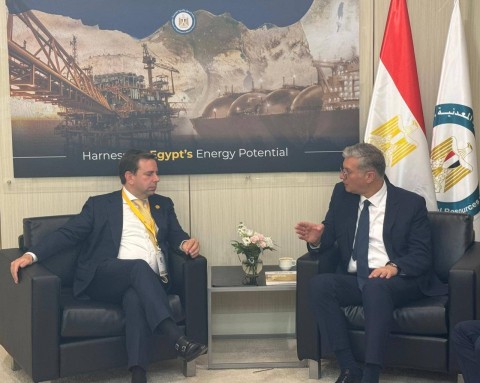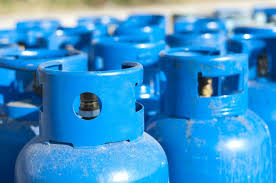Oil and natural gas have been among Egypt’s profitable resources for years. The North African country started by tapping fields on land rather than those in its territorial waters. Now, these onshore wells are starting to reach maturity, and industry leaders have begun to use previously unprecedented technologies to tap Egypt’s riches. Companies are now adopting innovative means to produce tight oil and gas, revive onshore brownfields, and maximize the production rates from these resources.
Digging Deeper
Egypt has been tapping unconventional hydrocarbon resources located in deeper strata that are difficult to be reached using normal techniques. “The demand for oil and gas in Egypt is growing every day, which drives Egypt to keep looking for more oil and gas reserves. This high demand led to the exploration for unconventional reservoirs,” Senior Advisor Reservoir Engineer at Apache Corporation, Dr. Mazher Ibrahim, told Egypt Oil & Gas.
In addition, the growing energy demand builds a local market that encourages international oil companies (IOCs) to invest and share their technologies in the Egyptian unconventional exploration fields. In order to extract oil and natural gas from deep strata, the operators need to use highly efficient advanced techniques throughout all the phases of any unconventional project in order to address the “very low permeability” nature of the fields, which requires “drilling horizontal wells with long horizontal section, increasing the contact area with the reservoir, and creating a stimulated reservoir volume (SRV) with acceptable conductivity, which can deliver hydrocarbons by conducting multi-stages hydraulic fracture jobs,” Mohamed Adel Gabry, Senior Petroleum Engineer at Khalda Petroleum Company told Egypt Oil & Gas.
One of the successful techniques implemented in unconventional drilling is geosteering, Senior Production Engineer at Apache Corporation, El Sayed Elshazly, told us. Geosteering consists in a way to control the wells according to downhole geological logging measurements, as defined by Schlumberger website. Geosteering is “used to keep the wellbore within a particular section of the fractured reservoir and maximize economic production from the well,” Elshazly explained.
However, the idea of what is considered an unconventional hydrocarbon resource changes as time passes and as new technologies are invented. “What we consider a conventional field today was considered unconventional or even sort of science fiction 25 years ago,” Elshazly said. Back in 1960, the list of unconventional hydrocarbon resources included tight gas sandstones; shale oil; oil shale; shale gas; heavy oil; tar sands; coal to gas; bitumen; coal bed methane (CBM); and gas to liquids, according to a research entitled ‘Unconventional Reservoir: Definitions, Types and Egypt’s Potential’ by Suez University scholars. By 2013, unconventional hydrocarbon resources had been narrowed down to just coal seam gas and gas hydrates, according to the study.
Unconventional Natural Gas
In 2008, Royal Dutch Shell discovered Egypt’s first commercially-viable unconventional natural gas reservoir – the Apollonia play. Yet, the vertical production from the field proved uneconomical. Therefore, investors teamed-up to start producing tight-gas from horizontal wells. The Apollonia reservoir is a concession operated by Bapetco along with shareholders: Apache, Shell, and EGPC.
The development and growth of the Apollonia field is ongoing. “Egypt started producing the first unconventional gas in 2016, the project is still in the early stage of development and more wells are yet to come,” Elshazly commented. The companies planned to start the project by drilling three horizontal wells in the reservoir. “Two of the three planned pilot horizontal wells have been drilled and completed with eight stages of fracture stimulation,” according to the Journal of Petroleum Technology’s (JPT) article ‘Unlocking Egypt’s Unconventional Resource Potential’. The first horizontal well was drilled in Q2 2016, while the second well’s drilling took place in Q4 2016 and production commenced early 2017, the article points out.
The operating companies in the reservoir adapted several techniques to enhance the wells. “Bapetco has performed large-scale foam fracturing operations to maximize the well productivity,” stated the Society of Petroleum Engineers (SPE) in the article entitled ‘Critical Success Factors Identification to Develop Unconventional High Porosity Low Permeability Shallow Limestone Reservoir of Apollonia Formation, Western Desert, Egypt. With this, the company conducted the first accomplished foam fracturing process in North Africa, according to the article.
Reviving Brownfields
Egypt’s oil consumption is growing relative to its production. In May 2018, the North African country consumed 2.935 million tons of petroleum products, while it produced 2.863 million tons of crude oil, condensates and butane, according to CAPMAS data. Accordingly, the government is working to boost crude oil production through new discoveries and the revitalization of brownfields.
Brownfields are oil and natural gas fields with declining production rates, and which are close to reaching maturity. Around 77% of Egypt’s oil production comes from brownfields. Hydrocarbon industry leaders use several stimulation techniques in order to develop brownfields and maximize their lifespan. The techniques include “acid stimulation, hydraulic fracture stimulation techniques, [besides] the use of artificial lifts with maximum withdrawal rate to get maximum production from that wells,” Mohamed Gabry told us.
In 2017, world oil leaders were increasing their conventional exploration, with almost 75% of the approved projects being brownfields, according to the Financial Times’s article entitled ‘Big Oil fights back’. “Not only are [brownfield] projects less risky than greenfield developments, they also tend to be less capital-intensive and are quicker to bring on stream, offering a quicker payback and better returns on development dollars,” Angus Rodger, research director at Wood Mackenzie, told the Financial Times. Global oil prices have started growing up to reach over $70 a barrel. Yet, as an oil importer, Egypt should use economic exploration types and innovative unconventional technology to boost its output from these existing fields.
The Economic Impact of Unconventional Energy
One of the main challenges faced during unconventional exploration is the cost needed for technology and specialized personnel. Even the techniques carried over from conventional plays are required to be performed more intensely in unconventional plays. “Although horizontal drilling is sometimes used for conventional wells, the unconventional play pushes the limits of horizontal drilling reaching out to more than 3,500 feet,” Elshazly explained, adding that the completion and production are further representing challenges for the currently used techniques in exploration and production (E&P) firms.
“As more E&P companies adopt new technologies, the advanced techniques [required for unconventional exploration] will be available at lower prices, and the national personnel will gain more experience using them,” Elshazly continued. As the country’s personnel gain experience, many people will find vacancies to work whether in engineering or technical positions.
Egypt has started implementing new methods and using novel technologies including tracer technology, which Elshazly says will “be of a great significance in the future” to both conventional and unconventional energy sources.
The cost of developing unconventional sources is a challenge. “From an economic point of view, the unconventional reservoirs differ from the conventional reservoir in the high capital cost of drilling horizontal wells with multi-stages hydraulic fracture,” Gabry stated. However, “the operating cost will be low as the production performance problems are low,” Gabry noted, adding that “the economic risk of unconventional reservoir are low because the unconventional reservoirs have a very wide areal extent.”
Moreover, Dr. Mazher Ibrahim said that the cost “could be optimized by applying unconventional technology and using local resources.” Adding to that, Elshazly noted that “the easy access to new technology and the readiness of local expertise can significantly reduce the cost of producing and developing unconventional fields. Ultimately, the return on investment will increase and the unconventional play will be favorable and profitable for more investors.”
However, in order for unconventional exploration to be economically feasible in Egypt, global oil prices need to go higher to compensate for the costs. “The major problems facing Egypt have been the need of huge amount of freshwater and low oil price during the last few years,” Ahmed Algarhy, PhD Assistant Professor at the Petroleum Engineering and Geology Department, Marietta College, told Egypt Oil & Gas. Algarhy explained that “organic shale development as major unconventional reservoirs may need oil prices near $90 [a barrel] to be feasible to be developed in Egypt.”
Yet, Algarhy anticipated ways to minimize unconventional development costs to make it profitable for Egypt. He highlighted the existence of studies conducted on methods to “minimize the need for water in fracturing, like in using a plasma pulse to fracture the formation,” which could decrease the costs of exploring unconventional resources.
Tapping hard-to-access hydrocarbon unconventional resources and reviving oil and natural gas brownfields are among ways to secure Egypt’s growing energy demands. Hence, over the long term, it will save huge amounts of foreign currency that would otherwise be spent on importing oil and liquefied natural gas. With the use of the right technologies and local personnel, Egypt will be able to bolster its foreign currency reserves and support petroleum sector employment.








